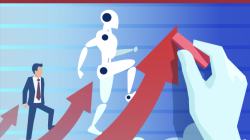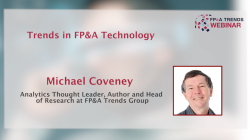This paper covers the findings of our sixth annual FP&A Trends Survey, where we share the trends and challenges facing FP&A departments around the world. The survey was performed at a time where organisations were looking to recover from the pandemic when many were trying to figure out how to operate in a changed business world.
This FP&A Trends webinar covered the findings of our 6th annual FP&A Trends Survey, where we tried to discover the latest trends and challenges facing FP&A departments around the world.
In this series of blogs, we are looking at the changes that need to occur within an FP&A department in order to cope with the impact of today’s analytic technologies. This blog covers the role of the FP&A Architect.
The cloud holds some exciting prospects for the development of cash flow planning. It will bring access to Machine Learning and Predictive Analytics on a scale previously only accessible to data scientists.
In this uncertain, technology-driven world, surveys conducted by the FP&A Trends Group and not only have identified three trends shaping FP&A Technology in 2022: Predictive and Prescriptive Analytics, Driver Based Planning (DBP) and Integrated Analytic Platforms.
In times of uncertainty, the failings of systems and measures are brought sharply into focus. Managing profitability often requires a complete re-think of how an organisation plans and the supporting systems that can help sustain profits in both the short and long term. That’s the subject of this paper.
Pagination
Subscribe to
FP&A Trends Digest

We will regularly update you on the latest trends and developments in FP&A. Take the opportunity to have articles written by finance thought leaders delivered directly to your inbox; watch compelling webinars; connect with like-minded professionals; and become a part of our global community.






